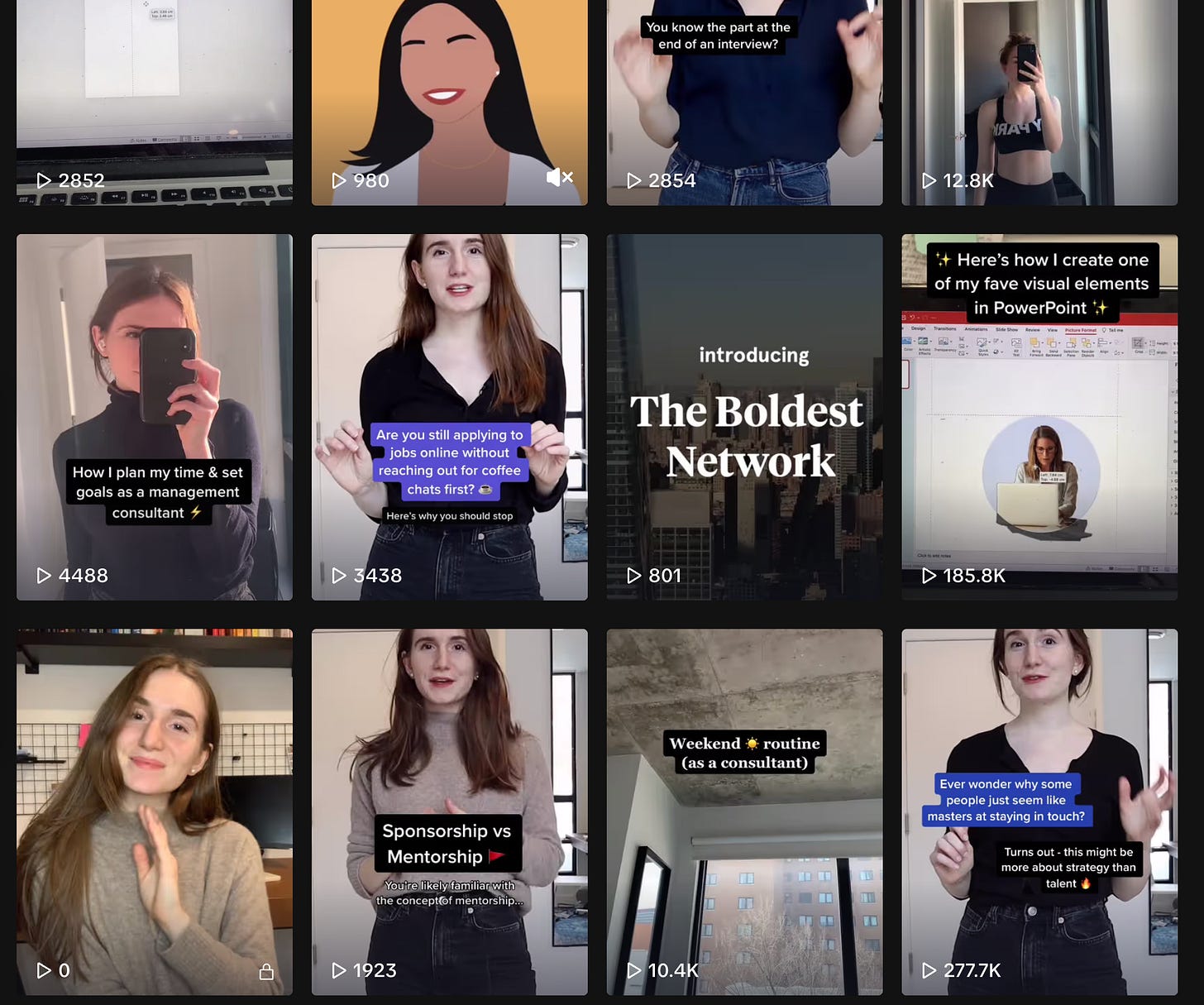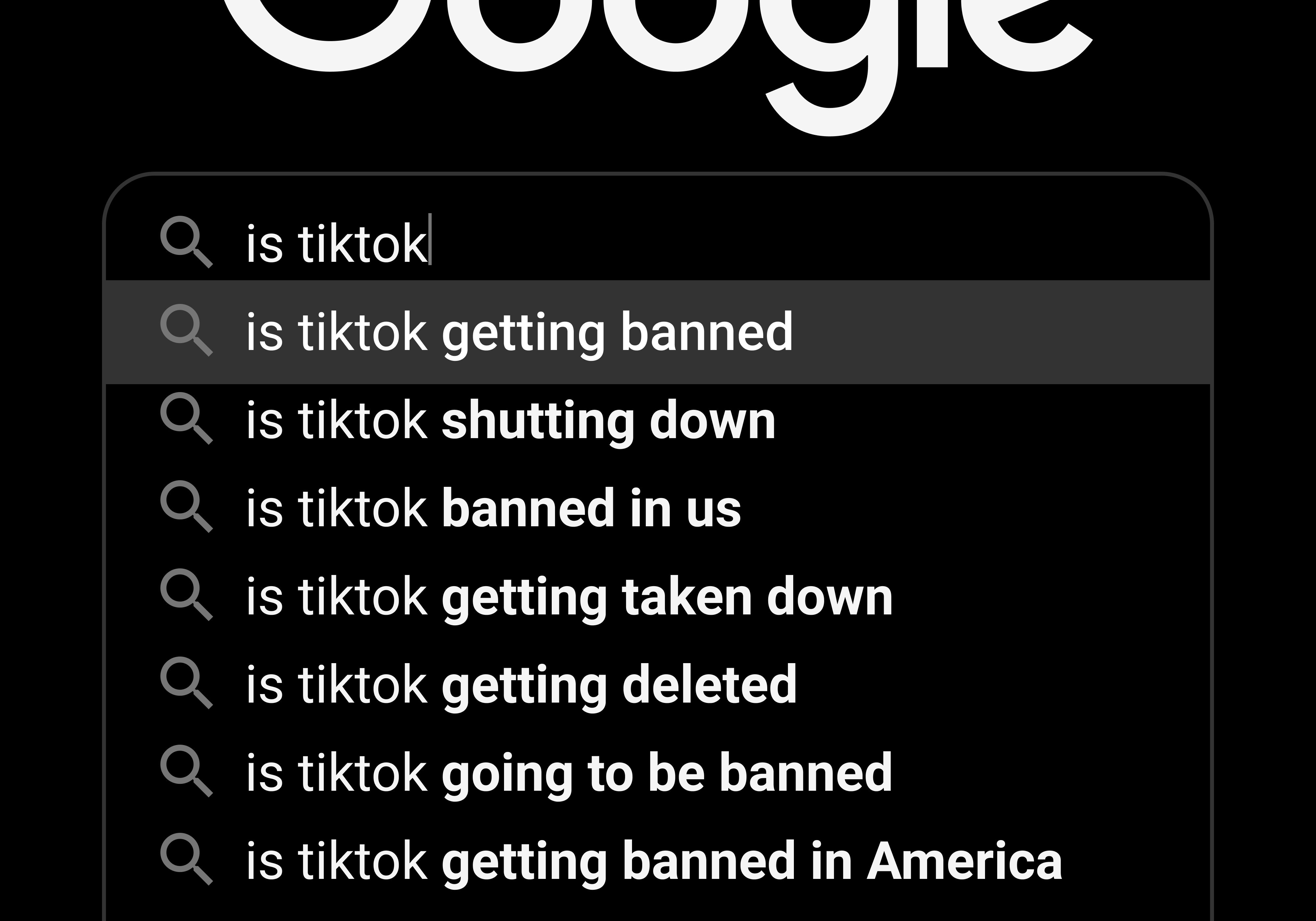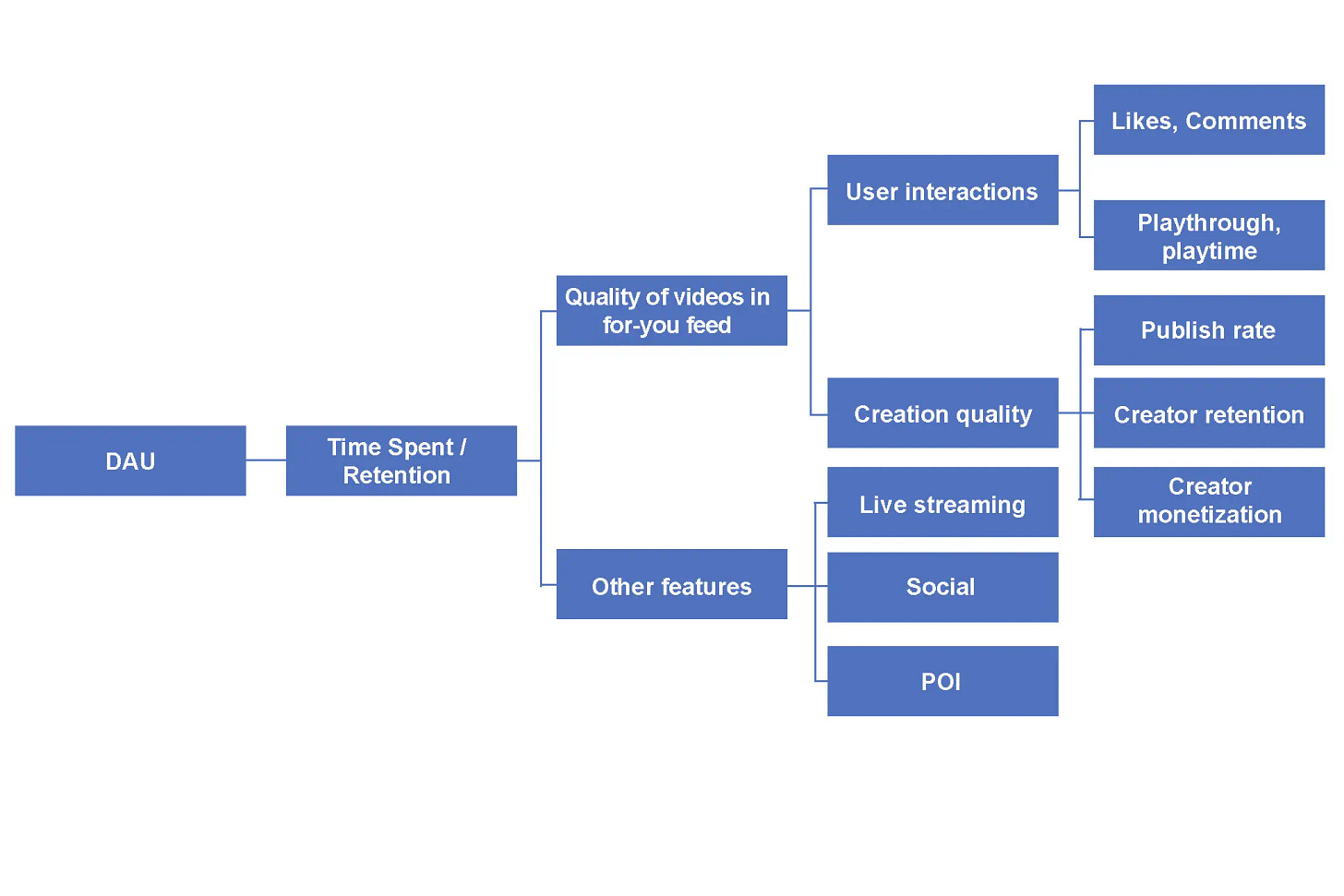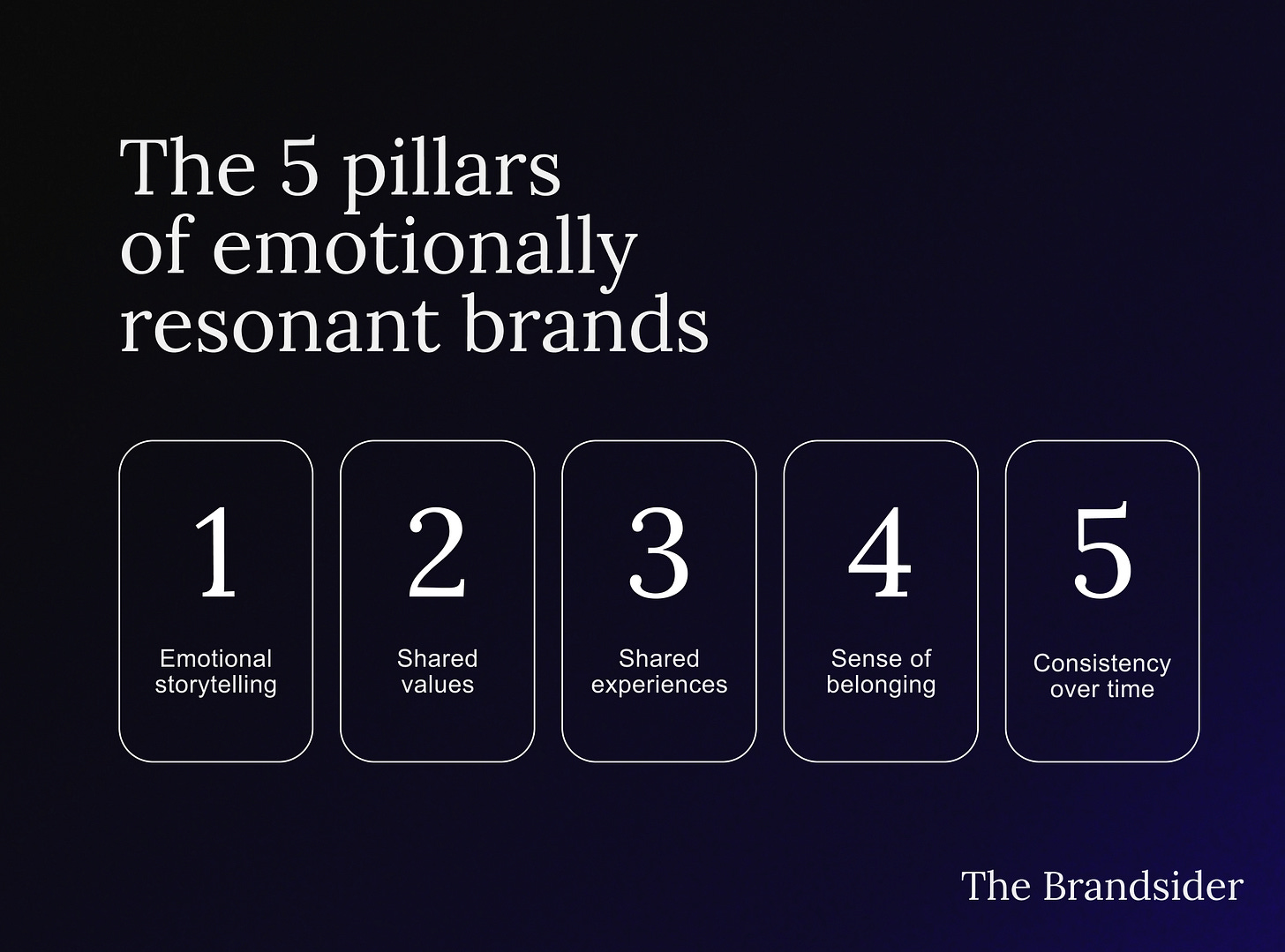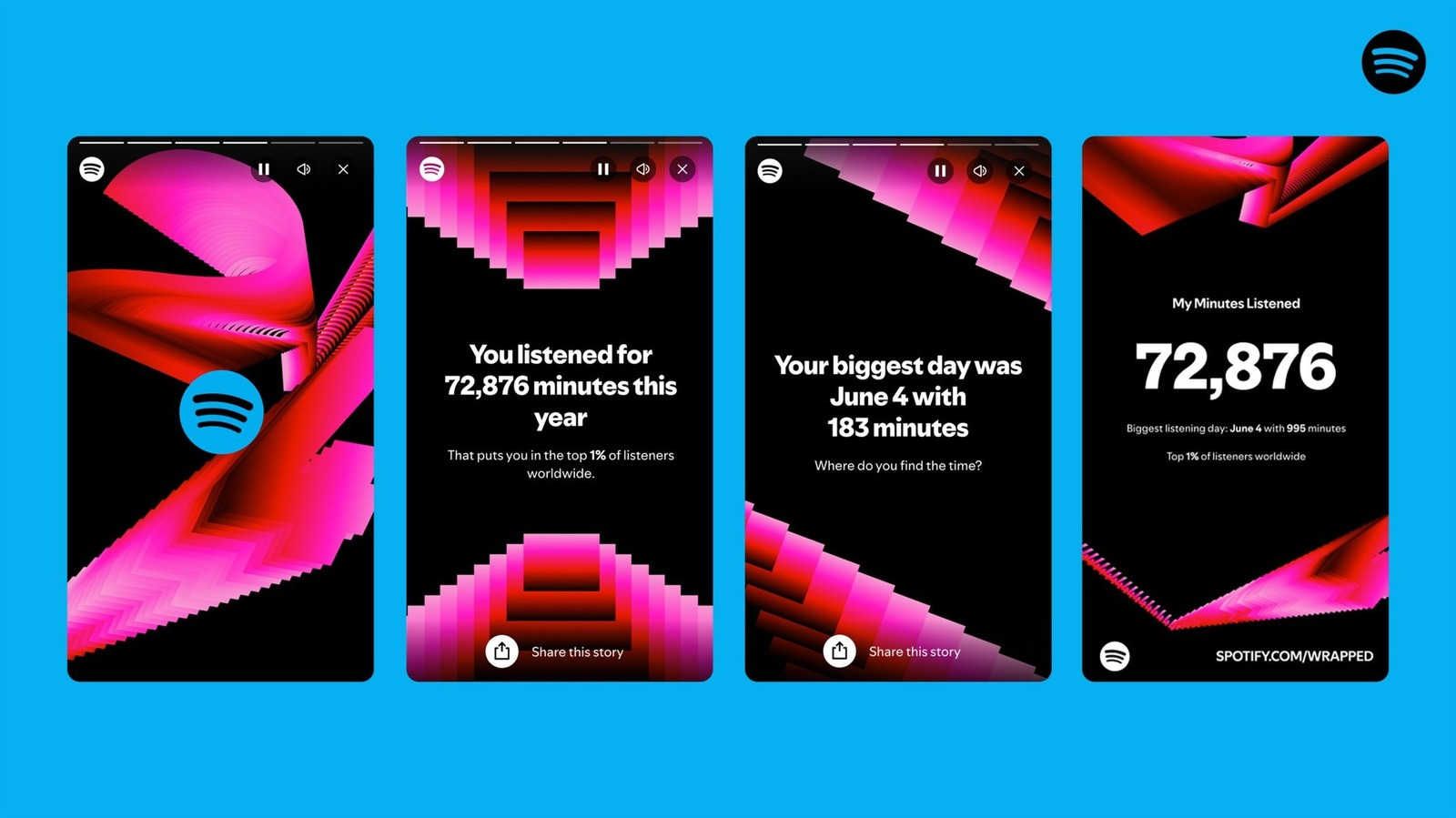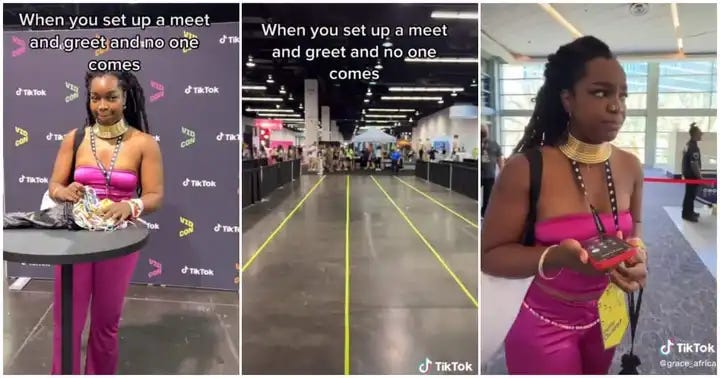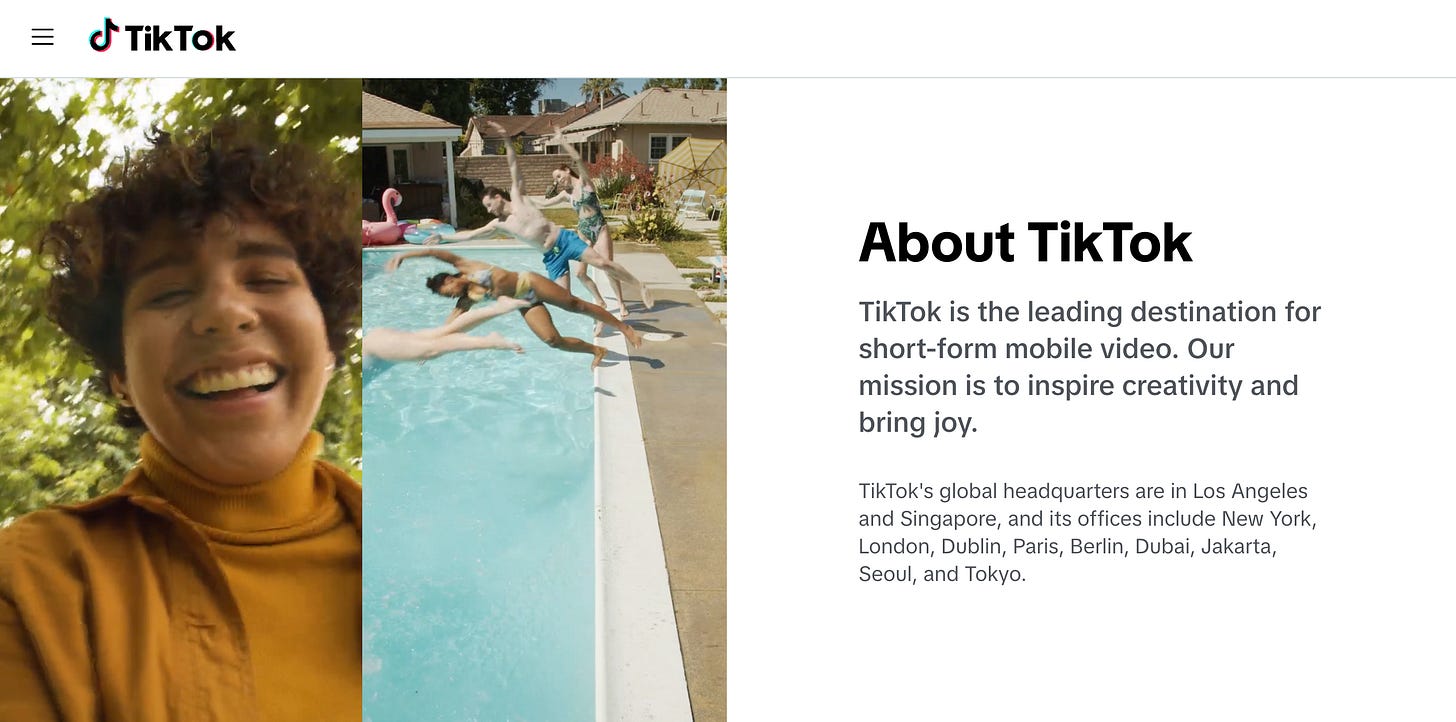TikTok's brand is more fragile than you might think
The problem with betting on product over connection
December 26 2024 | London, UK
I haven’t used TikTok in quite some time, but with a potential US ban Jan 10th, the brand has been top of mind
I have a very addictive personality, so the dopamine loop of short-form content doesn’t exactly agree with me. It’s also why I don’t do drugs.
TikTok? Took days off my life.
Instagram reels? Made me delete the app (and subsequently ghost everyone).
YouTube shorts? The only platform where I can control my viewing – by exclusively watching shorts on the Safari browser app (sad, I know).
I am not proud of this.
You’ll probably get the sense that I’m not the biggest fan of TikTok. With that being said, I do understand its power.
I’ve been creating content ad-hoc for some time, and it wasn’t without my foray into TikTok. It didn’t take long before I understood its effectiveness. Within a few weeks and a dozen videos, I had 5K followers and 40K+ likes. Crazy.
I can understand why TikTok launched the careers of so many creators – and why so many rely on it as their source of income.
But my feelings about it are still mixed.
TikTok is an incredible tool, but also responsible for a movement that is actively ruining our attention spans and fueling an epidemic of loneliness. Not to mention, the corporate brand feels a little bit off to me.
It’s a fairly personal take, but rooted in brand theory, market comparisons, and proof points. Also, I thought it might be fun to take a contrarian view on a product that has seen immeasurable success.
Whether you agree or disagree, I look forward to hearing your thoughts.
Also, this is foreshadowing the bigger push I’ll be making in short-form content in 2025 to build The Brandsider’s audience on social. It’s also why you won’t see the Intel Files here. But more on that in the next newsletter…
Finally, Merry Christmas! Hope you had a lovely and relaxing time with your families 🎄✨
Parker and I are excited to head to Edinburgh tomorrow to see some of ours.
xoxo, The Brandsider
Strategy Dossier
A deep dive into the strategic moves behind today’s biggest brands.
Fragile isn’t typically the word you’d associate with the world’s fastest-growing, most valuable social media platform. Yet TikTok reminds us that behemoths can be more fragile than they seem.
On one hand, TikTok faces a looming US ban, with a Supreme Court hearing scheduled for January 10th. If it fails to appeal, TikTok will be forced to sell its US operations or face a complete shutdown in one of its largest markets.
But on the other, its brand reveals a deeper vulnerability.
Despite ranking #3 globally for brand loyalty, I’d argue this is driven by product utility (and addiction) over genuine emotional connection.
With 1 billion monthly active users, TikTok has transformed the social media landscape, pioneering short-form video and redefining how we consume content. Yet its overreliance on platform utility as a value proposition leaves it exposed to competitors who could replicate its product while building stronger emotional resonance.
In this Strategy Dossier, we’ll unpack the fragility of TikTok’s brand and explore how its greatest strength might also be its greatest vulnerability.
Brand Bet
TikTok’s bet has been clear from the start: a laser focus on product.
Its groundbreaking recommendation algorithm has redefined expectations for hyper-personalized content, delivering the perfect video at the perfect time. This addictive precision has made TikTok indispensable—for now.
But strong brands aren’t built on utility alone.
The most resilient brands go beyond functionality to forge deep emotional connections. They build trust, loyalty, and a sense of belonging; a bond that outlives any single product or campaign.
Emotionally resonant brands are built on 5 pillars:
Emotional storytelling: A narrative rooted in a strong mission or founder’s vision.
Shared values: Alignment with the audience’s beliefs.
Shared experiences: Collective moments or rituals that connect users.
Sense of belonging: Fostering an ‘in group’ mentality,
Consistency over time: Deep trust built through consistency over a long time.
TikTok, for all its cultural relevance, falls short on many of these dimensions.
The platform’s utility may keep users coming back, scrolling late into the night, but doesn’t create the deeper connection that turns a product into an iconic brand.
Defining Moves
DEFINING MOVE #1:
The Curse of Hyper-Personalization
TikTok’s genius lies in its algorithm. The For You Page (FYP) creates an experience so deeply personalized that no two users’ feeds are the same. What you see on TikTok feels like it was made just for you, and that’s precisely the point.
But while hyper-personalization drives usage, it also undermines TikTok’s ability to foster shared experiences that build deeper emotional connections.
A strong brand connects people through collective moments, shared identities, or rituals.
With TikTok, a billion people might be using the same app, but each is having a completely different experience.
The algorithms siloes users into their own worlds, limiting the shared experiences that foster deeper emotional resonance.
While trends like viral audios, challenges, and communities like ‘BookTok’ or the recent ‘Winter Arc’ create fleeting moments of connection, these aren’t tied to TikTok itself. They are driven by creators and communities – than could find a home on another platform with a strong content discovery engine.
Contrast this with Spotify. While delivering equally personalized content, Spotify fosters shared experiences through in-product initiatives like Wrapped, Collaborative playlists, shareable Daylists (with hilarious titles I keep screenshotting and sending to people).
These go beyond the algorithm. They’re a productized output - made by Spotify, just for you – that you can share.
This helps create both a sense of collectively identity and individual delight – both strong positive associations - back to the Spotify brand. These experiences create lasting emotional resonance that TikTok, despite its cultural ubiquity, has yet to achieve.
-
DEFINING MOVE #2:
Discoverability Over Connection
TikTok’s core value proposition – and its brand idea – is rooted in discovery.
The ‘It Starts on TikTok’ campaign captures this beautifully and emotionally, celebrating the platform’s role as a launchpad for creators, trends and cultural moments.
For one man’s journey to lose his dad bod, to sharing the unique way of life in Scotland’s Outer Hebrides islands, TikTok is positioned as a catalyst for connection for new experiences:
Every day, journeys of discovery start on TikTok.
Whatever you come to TikTok for, you are only ever one swipe away from starting something new.
The campaign positions TikTok as the place where extraordinary moments begin, whether it’s discovering a new hobby, finding a favourite recipe, or launching a career. It’s an appealing premise.
But here’s the thing: discovery alone isn’t enough to build deep emotional resonance. Inherently, TikTok’s focus on short-term content creates fleeting interactions – often ones you can’t remember - where users scroll endlessly but rarely form deeper connections.
This surface-level engagement extends to user-creator relationships, too. TikTok helps creators to grow massive followings, but this rarely translates into long-term engagement. Case in point: in 2022, TikTok influencer with 1.3M followers had exactly ZERO people show up to her meet-and-greet.
Creators have picked up on this disconnect, with many choosing to diversify into platforms better suited for long-term loyalty, like Twitch, YouTube, and even Substack.
Despite trying to now move into longer-form video (now with 10 min limit), TikTok’s beachhead is in short-form. And therein lies the dilemma.
The stronger a viewer’s connection to a creator, the stronger their affinity for the creator’s main platform. TikTok, by design, doesn’t provide the time or space for that shift in association to happen.
With TikTok now skewing older, prioritizing ads, shutting down the Creator Fund and pushing the TikTok shop – they are giving viewers less and less reasons to feel emotionally connected to the platform. And this leaves them in a very vulnerable position.
-
DEFINING MOVE #3:
A Brand Without a Face
TikTok’s lack of emotional resonance is perhaps most visible in its corporate brand.
The brand’s public mission to ‘inspire creativity and bring joy’ feels hollow when contrasted with the reality of its product. While the platform promotes discovery and connection, its short-form content engine is widely criticized for harming our attention spans, our mental health, our creativity – and is causing real addiction problems. (TikTok brain anyone?)
The contrast becomes even sharper when you consider TikTok’s restrictions in its home market of China, where under-18s are limited to 60 minutes of use per day on the domestic version, Douyin. These actions suggest that even TikTok’s own creators recognize the harm their product can cause. Such contradictions undermine trust and authenticity in the brand’s messaging.
Compounding this issue is TikTok’s faceless corporate identity. Founder brands are a cornerstone of building trust, especially in America, where audiences are used to the founder narratives behind companies. Think of Jeff Bezos wanting to sell books, Elon Musk dreaming of sustainable mobility, or even Mark Zuckerberg coding Facebook in his dorm room.
These stories, while simplified and often idealized, provide a relatable ‘why’ that helps people connect with the brand. TikTok, by contrast, has no such narrative. Its corporate identity remains tied to ByteDance, a shadowy parent company that feels distant and opaque.
Further scrutiny in the US—where TikTok is seen as a national security risk—exacerbates the brand’s challenges. Whether these fears are justified or not, TikTok’s opacity makes it feel more like a faceless corporate entity than a trusted, community-driven platform. In today’s era of transparency, this disconnect leaves TikTok vulnerable to both consumer skepticism and regulatory pressures.
The Brandsider Take
TikTok’s meteoric rise highlights a truth that’s easy to forget: success hides fragility.
The platform’s unmatched ability to hook audiences through hyper-personalized content has made it the most used social media platform in the world. Yet, the very thing that propelled it to stardom– its algorithm and discovery engine – are what leave cracks in its emotional foundation.
As a brand strategist, this is an interesting case. But I can help but ask myself: does TikTok really need to build deeper emotional resonance into its brand? Maybe not.
But while they unarguably have the best platform today…
Given the pace of innovation and a potential ban looming, they might not hold onto this position forever.
Without shared experiences and a deeper why, they’re left vulnerable to new players who can match their utility, but give people something powerful to latch onto.
Utility can take you very far, but it doesn’t protect you forever.
But let’s see how Jan 10th goes…
More reading
A creator’s perspective on the potential TikTok ban (Coco Mocoe, Substack)
Why TikTokers may face problems forming deep connections with fans (Business Insider)
How China takes extreme measures to keep teens off TikTok (MIT Technology Review)



